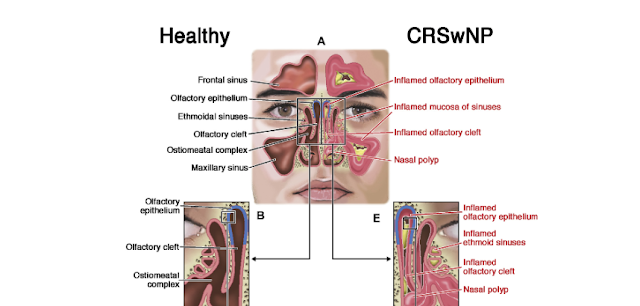How Dangerous Is Nasal Polyps ?

Chronic rhinosinusitis with nasal polyps ( nose polyps) is one of the most frequently encountered chronic nasal diseases, and the complexity of this condition in the presence of nasal polyps complicates the study of its etiological thera peutics. Patients whose symptoms are refractory to treatment often develop nasal polyps. Growth of these polyps leads to obstruction of the sinonasal passages, and surgery may be necessary in advanced cases to remove the polyps to restore sinus ventilation. Proliferation and thickening of the mucosal epithelium, with focal squamous metaplasia, glandular hyperplasia, subepithelial fibrosis, and stromal edema with numerous blood vessels, have been histologically observed in nasal polyps.10 One of the most important characteristics of chronic rhinosinusitis is the prolonged and exaggerated inflammatory reaction in the paranasal mucous membranes. Samter’s triad is a condition diagnosed with aspirin-induced asthma in a subset of patients with chronic rhi
